False Cabbage Hernia (Ceutorhynchus pleurostigma): [Characteristics, Detection, Effects and Treatment]
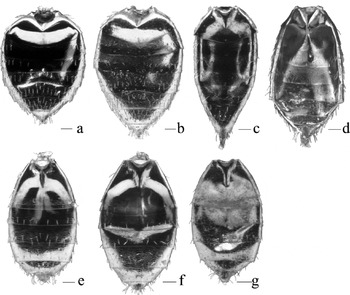
What is the false hernia of the cabbage?
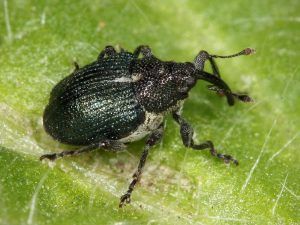 The beetle with the scientific name Ceutorhynchus pleurostigma, is a faithful attacker of cabbage or cabbage, vegetables belonging to the family of Cruciferae or Cruciferae Brassica Oleracea, to which it causes very peculiar lesions in the rhizome or root system.
The beetle with the scientific name Ceutorhynchus pleurostigma, is a faithful attacker of cabbage or cabbage, vegetables belonging to the family of Cruciferae or Cruciferae Brassica Oleracea, to which it causes very peculiar lesions in the rhizome or root system.
Although it is a tiny beetle, it produces grain-sized galls or hernias in the rhizome system of its victim, causing the tissues to hypertrophy.
The Cruciferae have two great varieties: the curly leaf cabbage, scientifically known as Brassica Oleracea Bullata.But there is also the smooth – leaved variety of cabbage, categorized as Brassica Oleracea Capitana.
Both species suffer attacks from these beetles. The problem is aggravated when these lesions join together and become larger, nesting dozens of eggs.The most relevant consequence is the poor development of the plant, which will not grow properly.
It should be noted that similar wounds are produced by the fungus Plasmodiophora brassicae, which should not be confused with the damage caused by this beetle.Cabbage hernia also causes thickening of the roots and the plant does not develop properly.
In the false hernia or false filly, practically the same thing happens, since the attack is underground, it occurs below the plant, always directed towards the root.
In general terms, many cruciferous plants are attacked, such as: cabbages, cauliflowers, broccoli, mustard, lettuce and radishes that are grown in acidic and humid soils, the most visited by these beetles and, above all, by the hernia fungus. cabbage, which produces a disease that is very difficult to banish from the soil and lasts for years.
For this reason, it is also recommended to destroy the affected plants and modify the reaction of the soil with the help of an application of lime or limestone amendment.
How can we identify it?
Among the most outstanding characteristics of this pest, we have to:
- Adult beetles measure just 3-4 millimeters.
- They are black in color.
- These beetles appear in the spring season.
- They are able to lay their eggs in the so-called neck area of the plant, where they open holes that cause atrophy of the tissues, forming galls the size of a pea, which, when joined and burst, let out many larvae.
- The larvae, white in color with a brown head, will act accordingly, with their usual voracity on the roots and neck of the plant, thanks to an intense chewing activity that produces a clear reaction through the galls or bumps.
The damage caused by this plague influences the quality of the product obtained by having the plants highly attacked by abnormal vegetation.
What plants does the false hernia of cabbage affect?
 It attacks all varieties of the Brassica oleracea L. species, from the Cruciferous family, which groups together all cabbage crops, including Brussels sprouts, broccoli, cauliflowers, turnips, radishes and radishes, among other plants how cabbage.
It attacks all varieties of the Brassica oleracea L. species, from the Cruciferous family, which groups together all cabbage crops, including Brussels sprouts, broccoli, cauliflowers, turnips, radishes and radishes, among other plants how cabbage.
Cabbage- type cabbages began to be seen in Spain in 1985, when smooth-leaved species and the so-called Milan species were cultivated for the first time.
Pontevedra, Valencia and La Coruña are the regions where this smooth-leaved species is most cultivated. On the other hand, the Milan species grows better in Barcelona, León and Pontevedra.They do so well that they already have captive markets abroad, because they are exported to France, Germany and the United Kingdom.
Obviously, the damage caused by this pest has a decisive influence on the quality of the product obtained, especially when it behaves like a pest and subjects the plants to permanent attack, which produces abnormal vegetation that will bear bad fruit.
That is why you have to take great care of these small intruders, in order to avoid economic catastrophes.
How to combat false cabbage hernia?
The most efficient way to combat the infestation of these unique beetles is, first of all, by removing weeds from crops, including small orchards.
For what reason? Many bugs, beetle eggs, flies and the like nest in the spontaneous cruciferous plants, which can cause a lot of deficit in the new sown plants.Therefore, it is prudent:
- Dig up those cabbage stumps that were left over from the previous harvest, even more so if there was any plague against which you had to fight.
- Practice crop rotation, avoiding planting the same species in the same place. It is necessary to space at least one year, rather looking for other associative varieties that are compatible with the cruciferous ones.
- Maintain good irrigation practices, without the ground becoming saturated with water, to avoid the proliferation of fungi and bugs that make the plants sick.
- Carry out sprays based on Lindane, in the seedbeds, when there are seedlings with 3-4 leaves to prevent attacks.
- Another good way to exercise control is with the application or contributions of nitrogen in the topcoat.
What are the best products to remove false cabbage hernia?
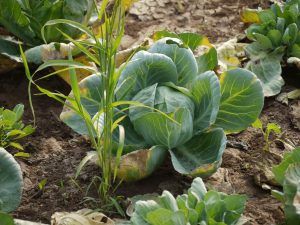 One of the effective treatments with insecticides is applied based on organophosphate. One of the most recommended by specialists in the area is Chlorfenvinphos.
One of the effective treatments with insecticides is applied based on organophosphate. One of the most recommended by specialists in the area is Chlorfenvinphos.
This product is applied and then the same dose is repeated at the foot of each plant, 10-15 days later.
Another strong chemical treatment, which should only be applied if the beetles behave like a pest, is the one containing Fonofos or Teflutrin and Fosalone, always following the instructions in the leaflet included by the manufacturer.

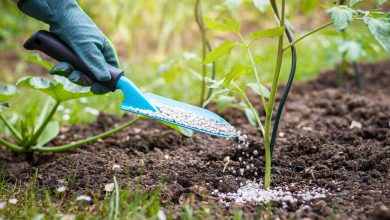
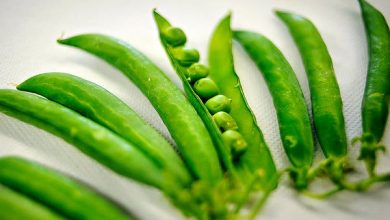
![Photo of Cabbage Caterpillars (Pieris brassicae and Pieris rapae): [Characteristics, Detection, Effects and Treatment]](https://www.complete-gardening.com/wp-content/uploads/2022/08/cabbage-caterpillars-pieris-brassicae-and-pieris-rapae-characteristics-detection-effects-and-treatment.gif)
